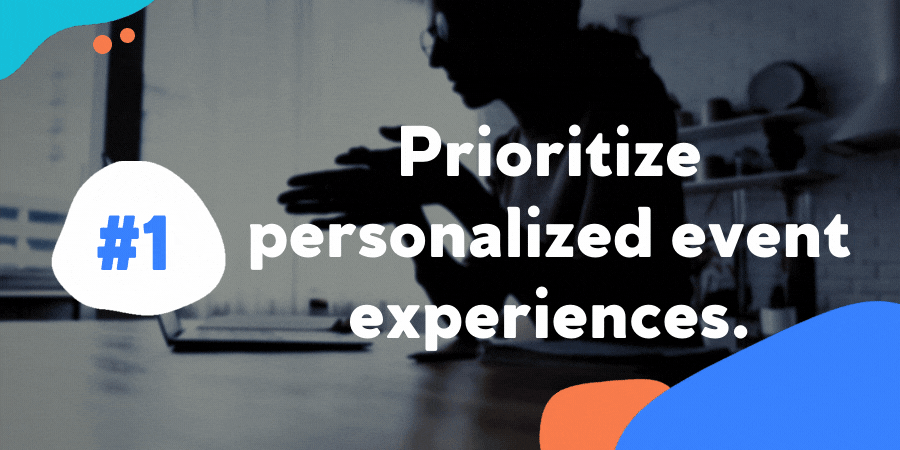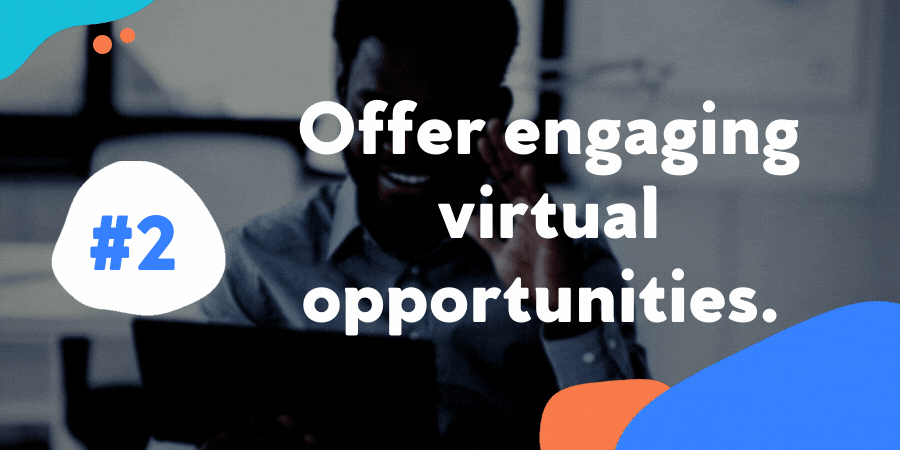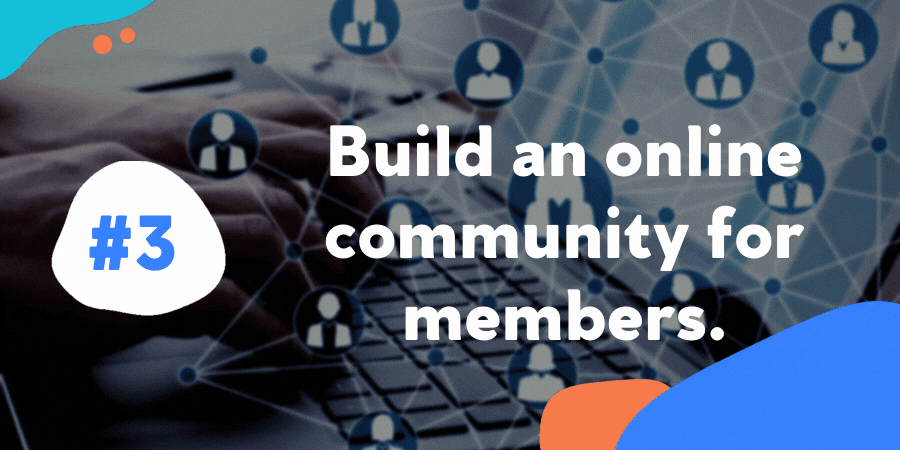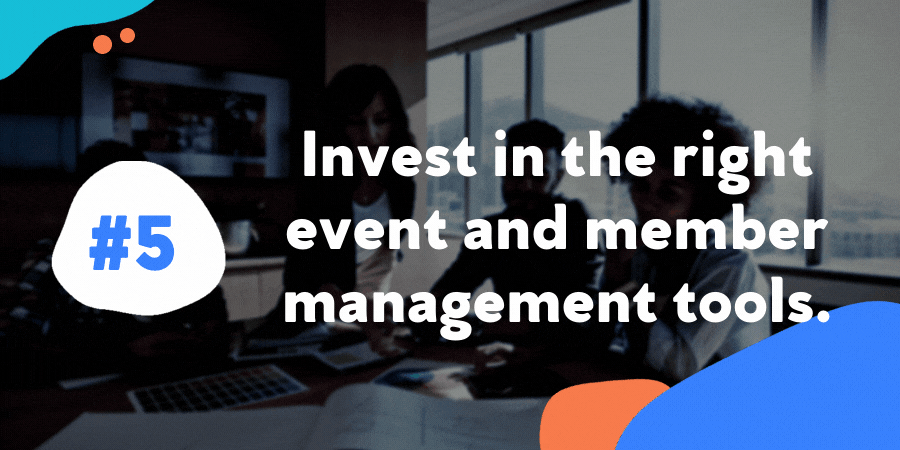Creating Hybrid Events That Appeal to Diverse Age Groups

Written by guest contributor Mike Barros.
Many associations host engaging events for their members such as annual conferences, trade shows, and expositions. While the nature of these gatherings has historically been in-person, many organizations have turned to virtual offerings in the past year or so to continue engaging with their members from afar.
Now, in-person gatherings are beginning to pop up once again. Yet many association event planners are hesitant to move away from the virtual engagement model that they’ve come to appreciate. Luckily, there’s an easy solution: hybrid events!
Hybrid events incorporate elements from both virtual and face-to-face experiences, effectively leveraging the best of both worlds. In doing so, they provide an increasingly convenient offering for your event planning committee as well as the members who attend.
Their flexibility also makes it simple to appeal to different audiences simultaneously, including members from diverse age groups and all walks of life. To do so, we recommend the following best practices:
- Prioritize personalized event experiences.
- Offer engaging virtual opportunities.
- Build an online community for members.
- Communicate proactively with event attendees.
- Invest in the right event and member management tools.
A well-planned event can help increase member involvement and provide an engaging opportunity for your audience. Ready to learn more about hosting a hybrid experience that appeals to a wide range of attendees? Let’s get started!

1. Prioritize personalized event experiences.
Your members aren’t likely to sit through event sessions that they don’t find relevant or intriguing, whether virtually or in person. To minimize the number of attendees exiting your event early, make sure they have a say in the experience they receive.
Personalized event experiences can go a long way for keeping members engaged and ensuring they see your event as a valuable use of their time.
After all, a member just starting out in their career is going to have very different wants, needs, and priorities than an established peer even in the same sector. And with the flexibility provided by hybrid events, the opportunities are endless. Here are a few examples of items you can give event attendees control over for a customizable and beneficial experience:
- Educational tracks such as technology, leadership, diversity, professional development, or customer experience
- Exhibitor categories that match their interests, providing a better guest experience as well as a higher ROI for participating businesses
- Networking preferences to be matched with peers, colleagues, mentors, and more
Once your members have made their selections, you can provide them with suggested schedules made up of relevant sessions and opportunities, with attendees having the final say. This strategy allows attendees to feel empowered over their own schedules and use of their time and ensures everyone receives an event experience curated just for them.

2. Offer engaging virtual opportunities.
Offering exceptional digital experiences is critical when hosting a hybrid event. In the past year, many organizations have turned to online and hybrid opportunities, so the way you engage with your audiences virtually must be optimal to stand out. It’s no longer enough to simply broadcast your live event speaker to guests’ screens. You have to do more to grab and maintain your audiences’ attention.
According to this OneCause study, a few of the most popular online offerings for hybrid events include:
- Event themes
- Picture-in-picture technology
- Real-time chat with other guests
- Live streamed content
- Interactive challenges
When you prioritize user engagement when selecting and planning your hybrid event elements, you ensure that your audiences will be increasingly involved for longer amounts of time. On the other hand, passive virtual elements such as pre-recorded video content is more likely to be abandoned—particularly by your younger age groups that tend to have decreased attention spans overall.

3. Build an online community for members.
Building an online community can be an effective and easy strategy to promote and drive excitement leading up to your upcoming hybrid event.
For one, it provides an opportunity for your older and less technologically savvy audience members to explore your online platform prior to the start of your tech-heavy event. This is a good idea due to the significant reliance on online engagement and telecommunications going forward.
Additionally, establishing an online hub for virtual communities can provide a simple way for members to engage with one another and collaborate leading up to, during, and long after your event takes place. They also allow for easy audience segmentation and virtual subgroups where participants naturally gravitate towards those who share their values and discuss relevant topics. After all, peer communities and networking opportunities are two of the main reasons why people join associations in the first place!
By taking a look at the most popular topics and ideas that your members explore online, you can have a better understanding of the types of things they’d be interested in learning more about during your upcoming conference.
.gif?width=900&name=Communicate%20proactively%20with%20event%20attendees.%20(2).gif)
4. Communicate proactively with event attendees.
As you surely know from previous event-planning endeavors, communicating with attendees beforehand is a critical piece of the puzzle. Doing so effectively means your members will be aware of your upcoming event, eager to register, and excited in the days and weeks leading up to it. This also means that your efforts will pay off in the end.
On the other hand, poor and too little communication can cause confusion, hinder ticket sales, and decrease engagement before and during the event. Make sure to stay on the positive side of things by following these tried-and-true best practices:
- Create an email drip campaign. When you take a drip approach, the number and types of messages depend on the responses you receive from your members. This makes it a more personalized marketing method for reaching various audiences.
- Inquire with attendees about what they’d like to see beforehand. What better way to appeal to different groups of people than to ask them directly what they want? Be sure to consider members’ requests when feasible.
- Share critical information about logistics. Hybrid events can be one of the most logistically challenging event types, so proactively communicating expectations beforehand is critical. Make sure both your remote and in-person attendees know how to engage with your event from either your virtual event platform or your event venue.
- Follow up after to request feedback and make improvements. Just like you asked attendees beforehand what they’d like to see, consider incorporating a post-event survey for attendees to share what they loved about the event and what areas have room for improvement. Then, leverage these insights to create an even better event experience next year!
On the other hand, this Membership Toolkit guide to effective communication warns of overcommunication as well. You don’t want to bombard your members with messages that have little to no relevance to them—which is where strategic segmentation comes in. Otherwise, they’ll likely begin to tune out all of your communication, and potentially miss out on a vital piece of information.

5. Invest in the right event and member management tools.
Now that you have a better idea of the types of engagement opportunities you’d like to offer your members, you need to be sure you have the resources to pull them off without a hitch. Luckily, you might already have some of the right tools in your existing event toolkit from previous in-person and virtual experiences. However, it’s important to take a look to compare what you have with what you need ahead of time.
By equipping your team with hybrid event-specific management software, they can have access to the tools they need, such as:
- A mobile event app
- Customizable event website and online platform
- On-site event management
- Live streaming and video chat functionality
- Personalized event session management and smart scheduling
- Robust analytics and reporting
Additionally, having an effective member management system in place can also help with the following:
- Online registration and payments
- Easy segmented communication
- “Member only” benefits
- Event volunteer management
- Detailed directory to manage and segment members
Having the right software is important for planning and managing any event successfully. When it comes to hybrid experiences, however, the need is more critical than ever. And the benefits don’t stop with your planning committee, but provide a seamless hybrid event experience for everyone involved.
Then, be sure you have the tools to continue managing your members on an ongoing basis after the event is over.
Hybrid events offer increased convenience and flexibility for attendees and organizers alike. As such, they function extremely well for appealing to all sorts of different member groups.
When you incorporate engaging virtual and personalized experiences, online member communities, and strategic communication, you can set your team up for ongoing success regardless of the diversity of your audiences. And luckily, all of the above is simple when you equip your team with powerful event and member management tools. Good luck!

About Mike Barros
Mike Barros is the President and CEO of Lumaverse Technologies. Before joining the Lumaverse, Mike was the President of Education Brands at Community Brands, the CEO of Diamond Mind, and the Chief Revenue Officer at JackBe. He resides in the DC-Metro area.